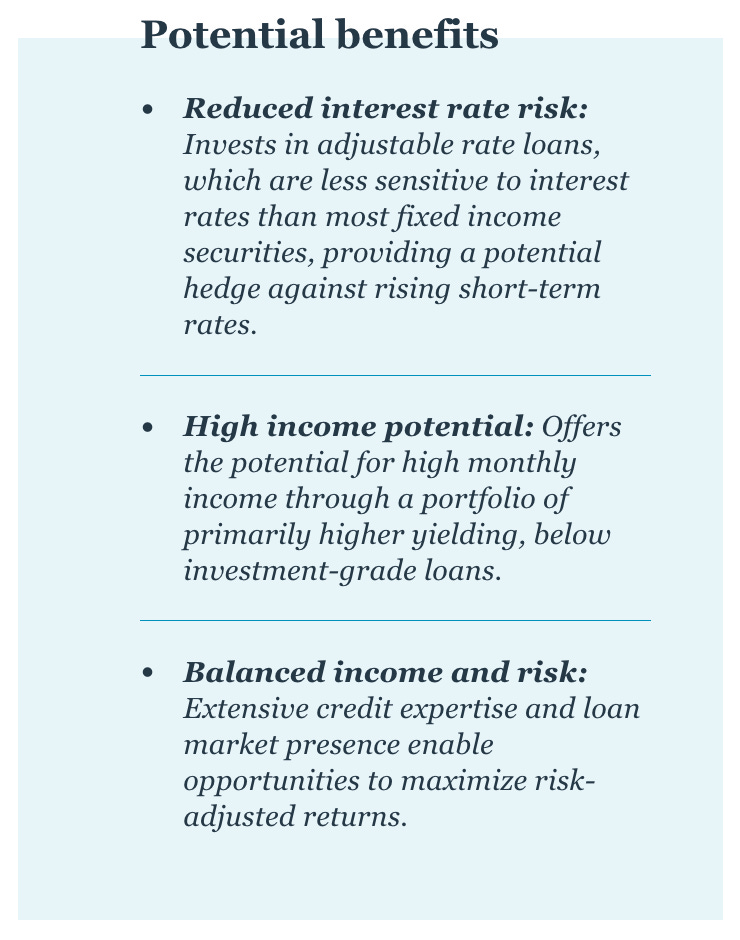Every week, we’ll profile a high yield investment fund that typically offers an annualized distribution of 6-10% or more. With the S&P 500 yielding less than 2%, many investors find it difficult to achieve the portfolio income necessary to meet their needs and goals. This report is designed to help address those concerns.
A lot of people see the words “floating rate” in a fund’s name and assume that means it’s low risk. In reality, it means it could be “lower” risk than low risk. Emphasis also on “could”. The risk level of a fund depends on a number of factors. In the fixed income world, it’s heavily dependent on composition, credit quality and duration. With the Nuveen Floating Rate Income Fund (JFR), the duration risk issue is mostly eliminated, but the other two components remain.
Unfortunately for more risk averse investors, a deeply low credit quality profile and high use of leverage make JFR a fund with much above average risk. That could be a problem for people who look at the 12% distribution yield and misread the overall risk/reward profile. Senior loans have historically had a fairly good risk/reward ratio, but JFR might be a case where more is less.
Fund Background
JFR seeks to achieve a high level of current income by investing in a portfolio of adjustable rate senior loans and other debt instruments. At least 80% of its managed assets will consist of adjustable rate loans; at least 65% of these must be senior loans secured by specific collateral. Other loans may include unsecured senior loans and secured & unsecured subordinated loans. The fund uses leverage in order to enhance yield and total return potential.
While there’s some other stuff mixed in, JFR should probably just be considered a senior loan fund. The management style of the fund isn’t anything terribly unusual, but the use of leverage is what sets it apart from more plain vanilla senior loan funds. The current amount of leverage used is pushing 40% of fund assets, which is extraordinarily high. With interest rates as elevated as they are, that pushes the total expense ratio on fund assets to more than 5% and the expense ratio on total managed assets to well over 3%. That’s a high bar to clear if you’re hoping to achieve above average returns over the long-term.
Keep reading with a 7-day free trial
Subscribe to The Lead-Lag Report to keep reading this post and get 7 days of free access to the full post archives.


